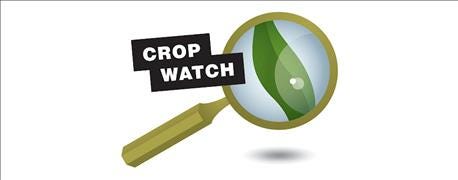
The corn harvest is over in the Crop Watch field. To help you get ready for 2016, we will provide one crop watch item per week until spring approaches again. We will focus on lessons learned from 2015 and previous years, many of them discovered in fields in the Crop Watch project.
Related: Early Planting and Two More Practices for Top Corn Yields
If you'd like to follow along on Twitter, here's your chance. Check out the #FarmingIn16 tag for stories all about preparing your farm for its best next year.

Crop Watch 2015: Designer plants of the future will be all about efficiency in harvesting sunlight.
Dave Nanda, crops consultant for Seed Consultants, Inc., is the adviser on the Crop Watch project. He also predicted more than 20 years ago that the plant of the future would be all about harvesting sunlight more efficiently. He predicted that corn breeders would select for plants that look more like Christmas-tree shaped plants, so they could collect more sunlight, even on bottom leaves. They will also be shorter plants, and could be planted much thicker. The ultimate increase in yield will come from more ears per acre.
Many developments in corn breeding recently point toward that prediction coming true. The hybrids of today still can't handle super-high populations in most cases, but some are taking on the architecture of plants that can function in narrow row situations and harvest more sunlight.
One of the minor details Nanda mentioned when predicting what future corn plants would like is that the tassel, the male part of the plant, would likely have fewer branches than many hybrids do today. Some have as many as a dozen branches on the tassel, although there are hybrids with as few as five that are sold today.
Fewer branches? Corn plants in the future may have fewer branches on tassels. That's because plant breeders may select for them. Fewer branches should go hand-in-hand with more efficient plants.
Related: Why Super-Long Ears Are Not the Answer to 300-Bushel Corn
Why would Nanda suggest that modern hybrids will likely have fewer branches on the tassel? It's all about efficiency, he says. Modern hybrids produce far more pollen than needed as long as the weather cooperates to any degree, and there aren't severe weather circumstances. Putting energy into the tassel to produce extra branches takes away from using energy elsewhere to contribute to more final yield.
Some hybrids you grow now may have more branches on the tassel than others. It's not a factor that will determine which hybrid you grow, but it may be an interesting pointer toward the future which is worth watching.
About the Author(s)
You May Also Like




